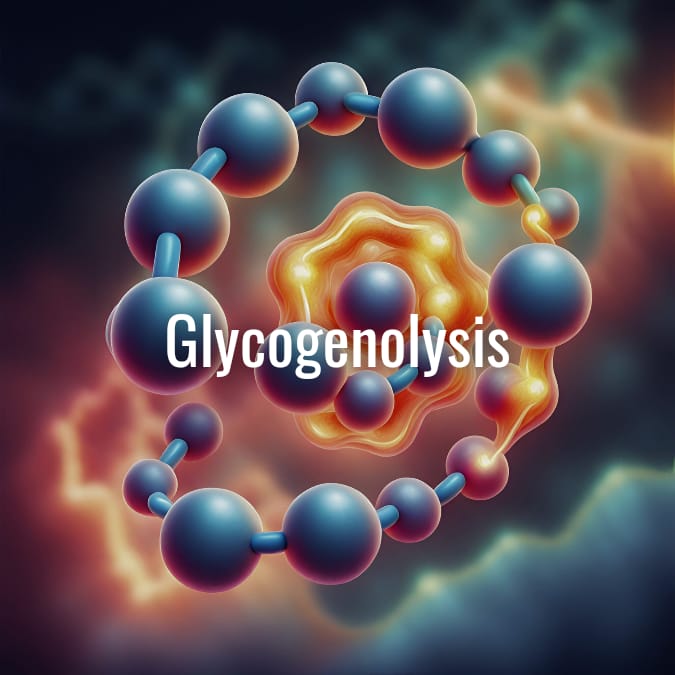Glycogenolysis is a vital process in the body that is responsible for breaking down glycogen, a complex carbohydrate stored in the liver and muscle, into glucose. This process plays a crucial role in maintaining glucose homeostasis and occurs in two major sites: the liver and muscle.
Overview of Glycogenolysis
- Liver glycogen is primarily used for glucose homeostasis, providing a source of glucose for the body during times of low blood sugar. In contrast, muscle glycogen is mainly used for its own energy needs during physical activity.
- The end result of glycogenolysis is the formation of free glucose or glucose-6-phosphate from glycogen, although it should be noted that this process is not the reversal of glycogen synthesis.
- Glycogenolysis is a multistep process that occurs in three stages: shortening of chains, removal of branches, and conversion of glucose-1-phosphate to glucose-6-phosphate.
Shortening of Chains
- The first stage, shortening of chains, is catalysed by the enzyme glycogen phosphorylase.
- This enzyme breaks down the α (1→4) linkages in glycogen, releasing glucose-1-phosphate.
- Pyridoxal phosphate (PLP), also known as activated vitamin B6, is an essential cofactor in this process.
Removal of Branches
- The second stage, removal of branches, is carried out by the debranching enzyme.
- This enzyme removes the 3 terminal units of a limit dextrin and attaches it to a longer chain.
- The last unit of the limit dextrin is then removed by breaking the α (1→6) linkage, releasing free glucose.
Conversion of Glucose-1-Phosphate to Glucose-6-Phosphate
- The final stage, conversion of glucose-1-phosphate to glucose-6-phosphate, is performed by the enzyme phosphoglucomutase.
- Most of the glycogen is broken down to produce glucose-1-phosphate, which is then converted to glucose-6-phosphate.
Formation of Glucose
- Once glycogen has been broken down into glucose-6-phosphate, it is translocated to the endoplasmic reticulum (ER) by glucose-6-phosphate translocase.
- In the liver, it is then converted to glucose by glucose-6-phosphatase.
- However, muscles do not have this enzyme and therefore do not produce free glucose. A small amount of glycogen is also degraded in lysosomes by acid maltase.
In conclusion, glycogenesis is a complex process that plays a crucial role in maintaining glucose homeostasis in the body. Understanding the different stages and enzymes involved in this process can help us better understand how the body regulates blood sugar levels.
Clinical Applications
- Glycogen storage disease (GSD) is a group of genetic enzyme deficiencies associated with excessive glycogen accumulation.
| Type I – Von Gierke Disease | Glucose-6-Phosphatase deficiency |
| Type II – Pompe Disease | Lysosomal α-1,4-Glycosidase deficiency |
| Type III – Cori Disease | Debranching enzyme deficiency |
| Type IV – Anderson Disease | Brandhing enzyme deficiency |
| Type V – McArdle Disease | Muscle glycogen phosphorylase deficiency |
| Type VI – Hers Disease | Hepatic glycogen phosphorylase deficiency |
This can be remembered as “Voyage on a Gay Pirate’s Luxurious ship, Captain is Drunk, Adventure awaits, Brave sailors and Mighty Marines, on a Hunt for Hidden treasures”





Leave a Reply